
New Photos
January 8, 2006
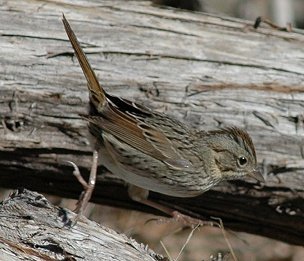 |
|
| Sparrows are supposed to hop, but sometimes you just can't wait--and this little Lincoln's sparrow was in a hurry to get to the goodies. | |
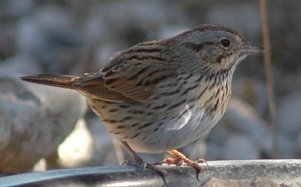 |
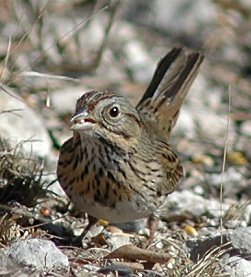 |
| The pale crescent on this Lincoln's sparrow's breast is the sun's reflection off the water surface. | Lincoln's sparrow feeding: the seed it's husking in its beak is a millet. Both Lincoln's sparrows and field sparrows prefer millet to other seeds in the mix, though they sometimes pick up very small fragments of yellow corn. |
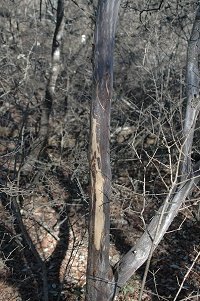 |
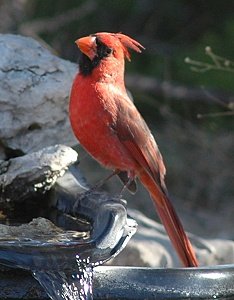 |
| These marks on a Texas persimmon in the west dry woods, near the north-south game trail used by deer, are probably antler-rubs. | "Ah...you've noticed my new topknot style..." |
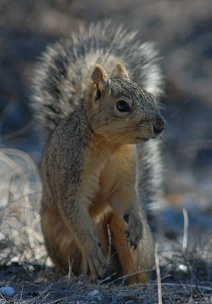 |
|
| Caught in the act: this squirrel, which had come out to eat birdseed off the ground, suddenly realized I was sitting only 10-15 feet away...it's about to take off for the trees. | |
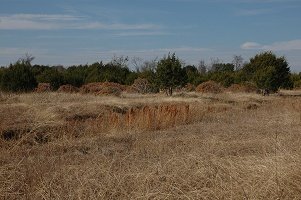 |
|
| This shot across the west gully shows some of the cedars cut down in the fall (those brown lumps) and also the spread of bushy bluestem (the fluffy russet grass seedheads in the gully.) | |
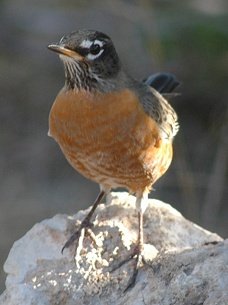 |
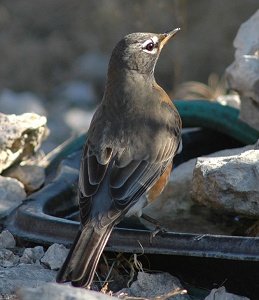 |
| Robins come to water near Fox Pavilion only when the creek is dry--and the creek is very, very dry. Robins normally stay in the creek woods, sometimes foraging in treetops along with the cedar waxwings and American goldfinches, and sometimes scuffling in the leaf litter like towhees. This one was very wary, and sat in the cedar talking softly for some minutes before finally venturing down to water. | The overall paler color, streaked white throat, and lack of white on the tail corners suggests that this is a migrant from the west, or at least the north central. |
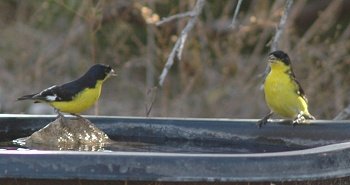 |
|
| "Excuse me! I was here first; this is *my* waterhole. You'll have to wait." | |
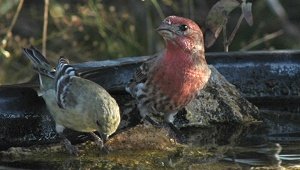 |
|
| A male house finch and a goldfinch bathing and drinking together. | |
![]()

